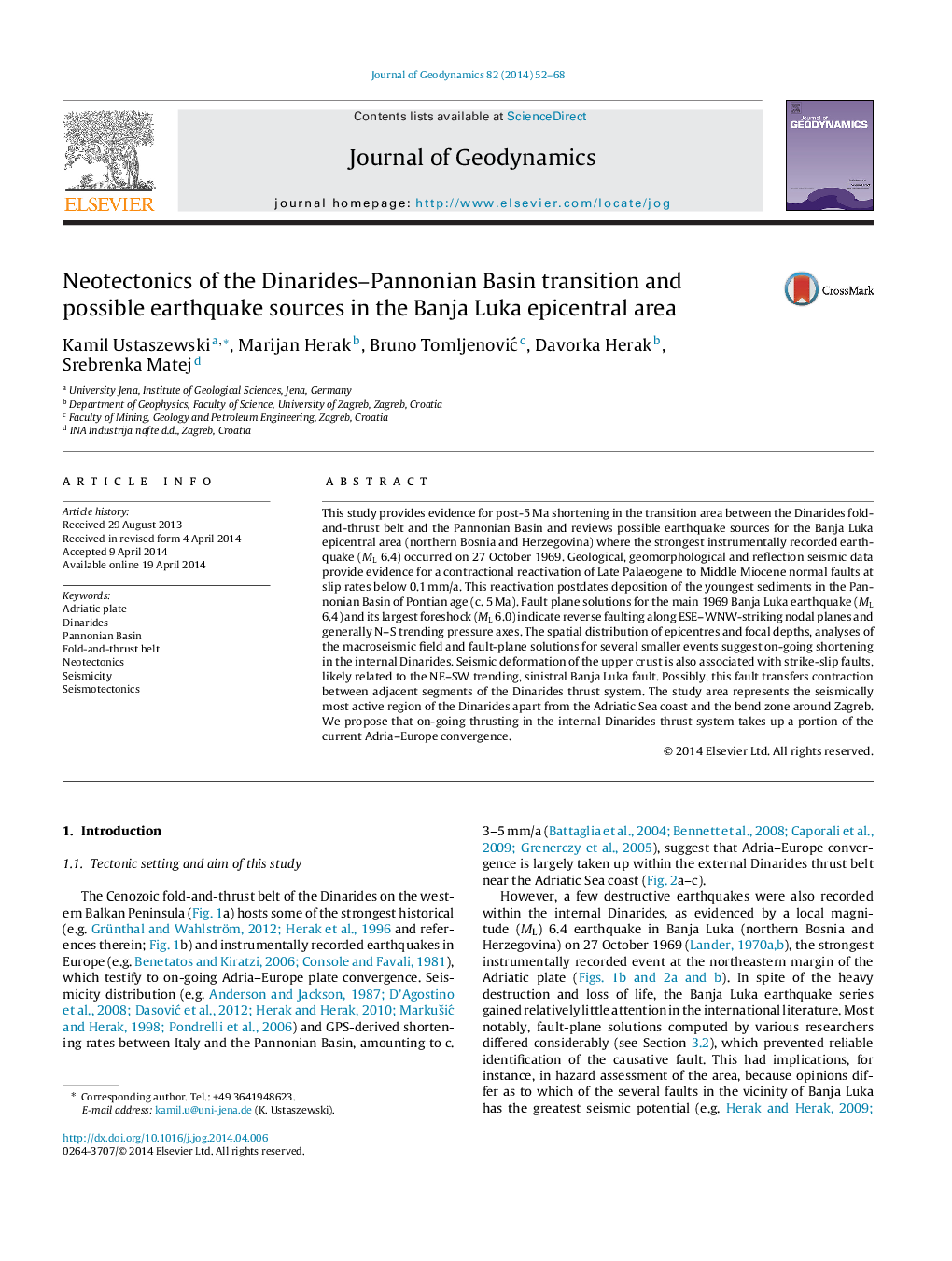| کد مقاله | کد نشریه | سال انتشار | مقاله انگلیسی | نسخه تمام متن |
|---|---|---|---|---|
| 6433101 | 1635767 | 2014 | 17 صفحه PDF | دانلود رایگان |

- Border between Dinarides and Pannonian Basin characterised by ongoing contraction.
- Compressive earthquake mechanisms suggest thrusting in the internal Dinarides.
- Total Adria-Europe convergence presently distributed across c. 300Â km.
This study provides evidence for post-5Â Ma shortening in the transition area between the Dinarides fold-and-thrust belt and the Pannonian Basin and reviews possible earthquake sources for the Banja Luka epicentral area (northern Bosnia and Herzegovina) where the strongest instrumentally recorded earthquake (ML 6.4) occurred on 27 October 1969. Geological, geomorphological and reflection seismic data provide evidence for a contractional reactivation of Late Palaeogene to Middle Miocene normal faults at slip rates below 0.1Â mm/a. This reactivation postdates deposition of the youngest sediments in the Pannonian Basin of Pontian age (c. 5Â Ma). Fault plane solutions for the main 1969 Banja Luka earthquake (ML 6.4) and its largest foreshock (ML 6.0) indicate reverse faulting along ESE-WNW-striking nodal planes and generally N-S trending pressure axes. The spatial distribution of epicentres and focal depths, analyses of the macroseismic field and fault-plane solutions for several smaller events suggest on-going shortening in the internal Dinarides. Seismic deformation of the upper crust is also associated with strike-slip faults, likely related to the NE-SW trending, sinistral Banja Luka fault. Possibly, this fault transfers contraction between adjacent segments of the Dinarides thrust system. The study area represents the seismically most active region of the Dinarides apart from the Adriatic Sea coast and the bend zone around Zagreb. We propose that on-going thrusting in the internal Dinarides thrust system takes up a portion of the current Adria-Europe convergence.
Journal: Journal of Geodynamics - Volume 82, December 2014, Pages 52-68